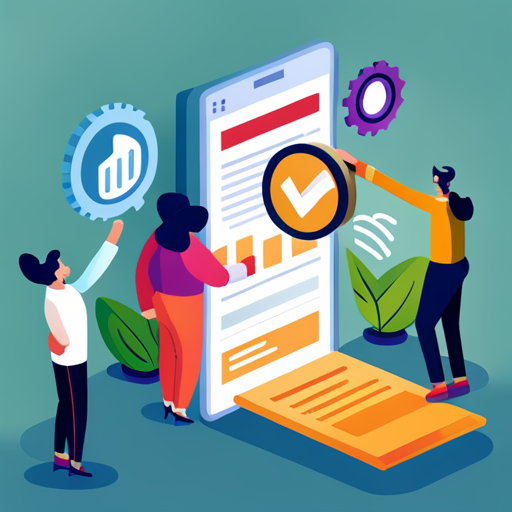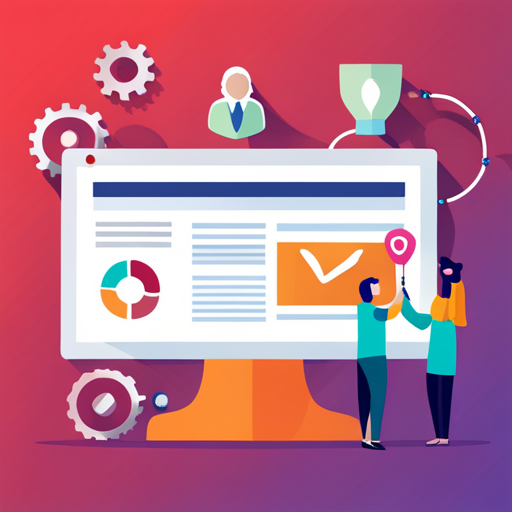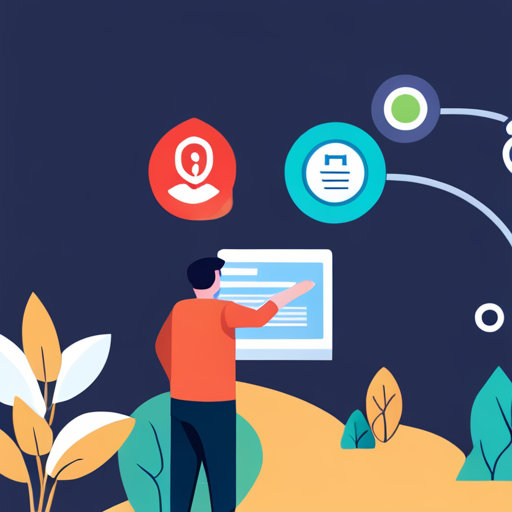In the competitive business landscape, truly connecting with your users’ pain points becomes a make-or-break factor for retaining and growing your customer base. 😌
Yet, this process often gets trapped in what we call ‘The Analytics Black Hole’ or ‘The Bottleneck’ – those frustrating barriers that hinder businesses from effectively diagnosing and addressing their users’ concerns. 😩
But fear not! This guide will dive deep into these obstacles, unveiling powerful strategies to overcome them. And that’s not all – as a bonus, we’re offering a FREE pain points slide Journey Template that will help you navigate a more seamless and user-focused path for your business. 🚀
Get ready to level up! 💪
What is User’s Pain & How to Indentify One
‘User pain‘ refers to problems or difficulties your customers encounter while interacting with your product or service.

Identifying these pain points means understanding the areas of your business that cause frustration, inconvenience, or hinder users from achieving their desired outcome.
Here are a few strategies to identify user pain:
- Customer Surveys 📋: Direct feedback from your users is an invaluable resource. Regularly conducting surveys can shine a light on the areas that need improvement. Ask open-ended questions to allow customers to express their issues in detail.
- User Testing 👩💻: This involves observing users while they interact with your product in real-time. Watching a user navigate your website or use your product can expose issues that you may not have considered.
- Social Media Monitoring 📱: Customers often express their satisfaction or frustration on social media. Monitoring your brand’s social mentions can reveal common themes or issues that your customers are facing.
- Sales and Customer Service Interactions 💼: Your sales and customer service teams interact with customers every day. They can provide firsthand insights into the challenges customers face.
How to Evaluate User Journeys and Enhance User Experience

Evaluating the user journey and improving the user experience entails careful examination of the interactive journey between the user and your product or service. Here are some strategies that can help improve this process:
User Journey Mapping
This visual representation of a user’s interaction with your product or service over time and across different channels can provide valuable insights. It allows you to identify any friction points and opportunities to enhance the user experience.
For example, a furniture e-commerce store might find that users hit a snag when trying to visualize how a piece fits in their home. In response, the company could introduce a 3D visualization tool.
Analytics
Using tools like Google Analytics or Hotjar can help understand where users spend time on your website, which pages they bounce from, and where they get stuck. For instance, if a substantial number of users abandon their shopping carts before checkout, it might be an indicator that the checkout process is too complicated.
A/B Testing
This involves comparing two versions of a webpage to see which performs better. For example, you might test two different call-to-action (CTA) buttons to see which one drives more conversions.
Usability Testing
This involves observing users interact with your website in real-time, providing immediate insights into their experience. For example, users might struggle to find the ‘contact us’ section, indicating that the website’s navigation needs improvement.
Feedback Loops
Constantly seek feedback from your users. This can be achieved through surveys, user interviews, or feedback forms. For example, after a customer service interaction, you could send a quick survey asking about the user’s experience.

Creating a User Journey Map: A Step-by-Step Guide
Creating a user journey map is not a herculean task if the right steps are followed. Here’s a step-by-step guide to help you get started:

- Define Your Personas: Begin by understanding who your users are. Create fictional yet realistic personas representing different user segments. A persona can include demographic information, behavior patterns, motivations, and goals. For example, ‘Tech-savvy Tim’ is an office worker who appreciates quick and efficient online services.
- Identify Touchpoints: These are the points of interaction between the user and your product or service. List the various channels through which a user may interact with your company, such as your website, mobile app, email, or customer service. For example, ‘Tim’ might first encounter your brand through a Google ad, visit your website, and then download your app.
- Map Out the User Journey: Start by documenting each step a user might take when interacting with your product or service. For ‘Tech-savvy Tim’, this could include searching for a product, comparing prices, making a purchase, and writing a review.
- Highlight Pain Points: Identify potential hurdles or areas of friction in the user journey. Are there steps in the process where a user might get stuck or abandon the journey? For instance, if the payment process on your app is complicated, ‘Tim’ might abandon his cart.
- Propose Solutions: Brainstorm ideas to solve the identified pain points. This could involve simplifying the checkout process or offering live chat support for immediate assistance. For example, introducing a one-click checkout option could resolve ‘Tim’s’ struggle with a complicated payment process.
- Visualize Your Map: Lastly, create a visual representation of your user journey map to make it easier for your team to understand and utilize. This visualization could be a simple flowchart or a more detailed storyboard depending on the complexity of your journey.
Optimizing Your User Journey with these pain points slide
Optimizing your user journey involves a strategic approach to tackle identified pain points and streamline the overall user experience. Here are some examples of how you might optimize your user journey with the insights gained from the pain points slide:

Simplify Navigation
Suppose your pain points slide highlights that users find your website’s navigation complex. A strategy could be to restructure your site’s menu and categorize items into collapsible sections.
For instance, an e-commerce clothing store could categorize their products by ‘Men’, ‘Women’, and ‘Kids’, and further sub-categorize into ‘Tops’, ‘Bottoms’, ‘Shoes’, etc. This simplification can lead to a more intuitive navigation experience for the user.
Streamline Checkout Process
If your users are abandoning their shopping carts due to a complicated checkout process, your pain points slide priority should be to simplify this experience. Strategies like one-page checkout, guest checkout option, and reducing the number of form fields can drastically improve user experience.
For example, Amazon’s ‘1-Click’ ordering greatly simplifies the purchasing process for returning customers.
Improve Search Functionality
A common pain points slidecould be inability to locate specific products or information on your website or app. Enhancing your platform’s search functionality with auto-suggestions, filters, or categories can help users find what they’re looking for more swiftly.
For example, Airbnb allows users to search for rentals with filters like location, date, type of property, amenities, and more.
Provide Clear Call To Actions (CTAs)
If users are unclear about what to do next on your website, they might get frustrated and leave. Clear, concise CTAs guide users through your website and make the journey more seamless.
For example, a software company could have a vibrant ‘Start Your Free Trial’ button on their homepage.
Optimize For Mobile
If your pain points slide shows that users find your mobile site difficult to use, it’s time to optimize for mobile. This could mean making buttons easier to click, improving site speed, or making forms easier to fill out on mobile devices.
For example, many fast food companies have optimized their mobile apps for quick and easy ordering on the go.
The goal is to create a frictionless user journey by addressing the pain points identified in your slides. This process requires continuous evaluation and iteration but can significantly improve your user experience over time.
Free User Journey pain points slide Template

To further assist you with your user journey mapping process, here are 5 free user journey pain points slide templates that you can utilize:
- Simple User Journey Map Template: Ideal for beginners, this template has a clean, simple design. It outlines the basic steps of a user journey, including touchpoints, emotional experience, and opportunities for improvement. For example, if ‘Tech-savvy Tim’ found the payment process frustrating, the emotional experience section would indicate a negative emotion at that stage, offering a clear visual cue for areas requiring attention.
- Detailed User Journey Map Template: This comprehensive template delves into greater detail, adding elements such as user goals, thoughts, and actions at each stage. It is excellent for complex user journeys that involve multiple touchpoints. For instance, if ‘Fitness-focused Fiona’ uses your health app daily for workout and diet tracking, her thoughts, actions, and goals would vary significantly throughout the day, providing valuable data for optimization.
- E-commerce Journey Map Template: Specifically tailored for e-commerce businesses, this template focuses on the online shopping experience, from product search to post-purchase service. For example, if ‘Shopping-savvy Sally’ enjoys hunting for deals on your platform, this template would highlight her journey, pinpointing stages where she might encounter issues, like a complicated checkout process or confusing product descriptions.
- SaaS User Journey Map Template: Designed for Software-as-a-Service (SaaS) businesses, this template emphasizes interaction with software products. It includes sections for different user states, such as trial users, new users, and long-term users. For example, if ‘Startup Steve’ is exploring your project management tool, this template can help trace his journey from a trial user to a long-term subscriber, identifying potential pain points at each stage.
- Mobile App User Journey Map Template: With a focus on mobile user experience, this template is invaluable for businesses with mobile apps. It tracks the user journey through app features, noting performance and user satisfaction at each point. For instance, if ‘On-the-go Olivia’ uses your food delivery app, this template can trace her experience from browsing restaurants to receiving her meal, highlighting any areas of friction.
These templates serve as a starting point. They should be customized to fit your specific needs and user profiles. Remember, the ultimate goal is to create a seamless, enjoyable user journey that encourages user retention and growth.
Optimizing SaaS Success: Unleashing the Power of User Journey Templates

The power of user journey templates in optimizing SaaS success cannot be understated. These templates provide a valuable framework for understanding and improving the customer experience at every stage of their journey. Let’s delve into this topic with some examples and structured points:
- Identifying User Behavior Patterns: User journey templates can help in understanding the patterns of behavior exhibited by users. For instance, if ‘Freelancer Fred’ is using your graphic design software, a user journey template can reveal that he frequently uses certain features over others. This information can be instrumental in focusing your development efforts on the most used features and improving them further.
- Spotting Bottlenecks: Bottlenecks in the user journey can lead to user churn. For example, if ‘Entrepreneur Emily’ encounters difficulties during the onboarding process on your project management SaaS, she might get discouraged and abandon the tool. User journey templates help in identifying these bottlenecks, enabling you to streamline the process and reduce friction.
- Personalizing User Experience: By understanding the various stages of the user journey, you can deliver a more personalized and satisfying user experience. If ‘Developer Dave’ mostly operates in the code-editing module of your software, you could customize his dashboard to feature related tools and shortcuts prominently, significantly enhancing his user experience.
- Prioritizing Development and Features: User journey templates can aid in deciding which features require immediate attention and which can be scheduled for later development. For instance, if many users like ‘Blogger Bob’ are having issues with the image editing tool in your content management software, it signals the need for immediate improvement in that area.
- Enhancing User Retention: By continuously refining the user journey based on the insights gathered from these templates, SaaS businesses can significantly improve user retention. For ‘Marketer Mary’, a simplified report generation feature in your marketing analytics tool could mean the difference between continuing with your service or moving to a competitor.

Above all, the user journey templates are not a one-size-fits-all tool. They should be continuously adapted and refined according to your evolving user base and their feedback. Remember, the ultimate goal is to provide an intuitive and satisfying user experience that keeps them coming back.
Conclusion
User journey templates: the secret weapon for optimizing SaaS success! 🚀
They offer a roadmap to understand and enhance the customer experience at every stage of their journey. 💡
By harnessing the power of these templates and iteratively refining them, businesses can supercharge user retention, boost customer satisfaction, and unlock exponential growth. ⚡️
So, why wait? Start using user journey templates today and unleash the full potential of your business! 💪🏼

10+ years experience in Marketing and Operations
